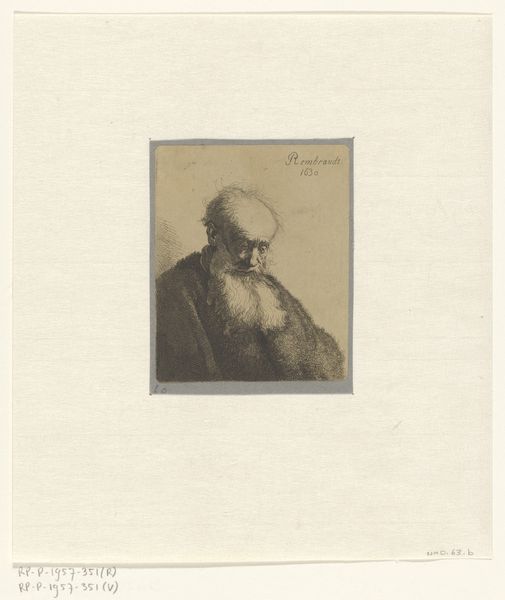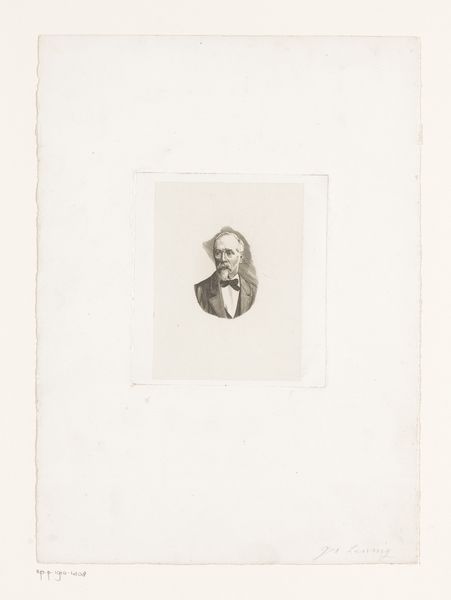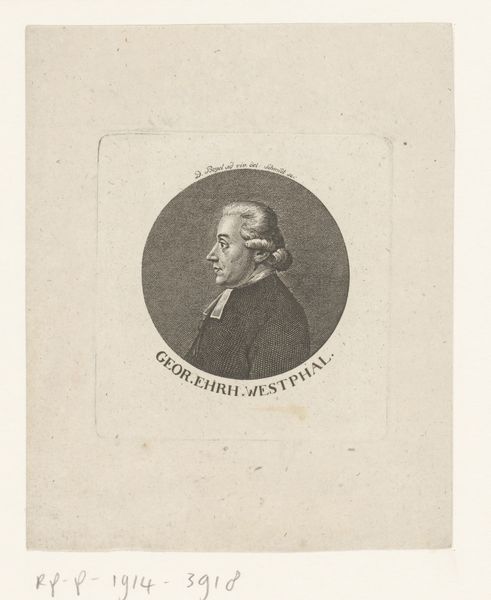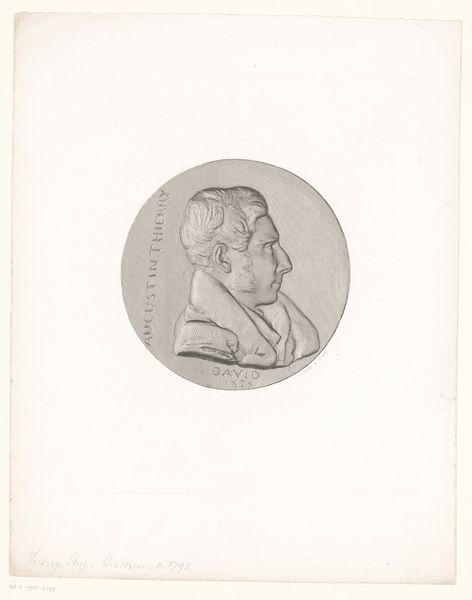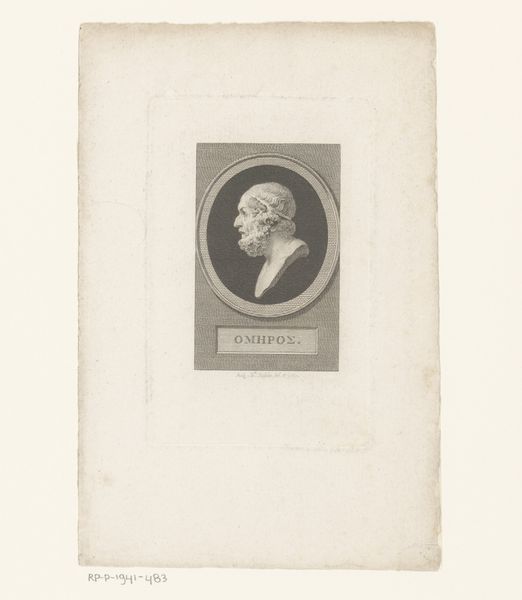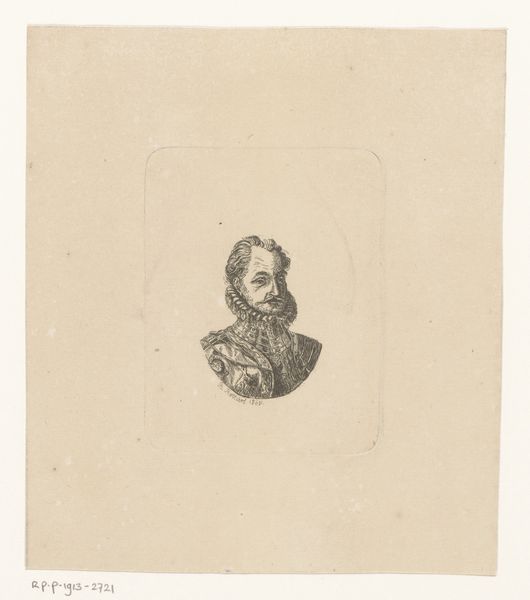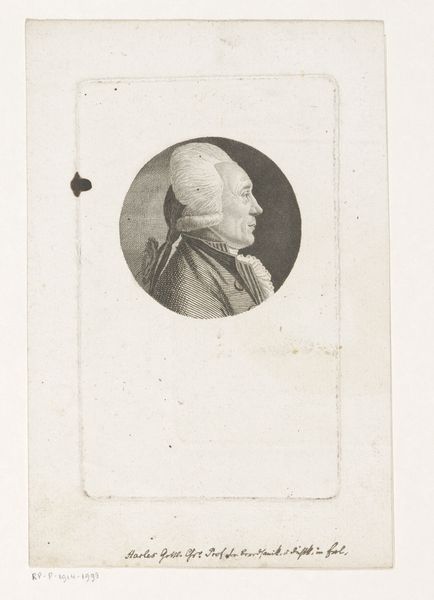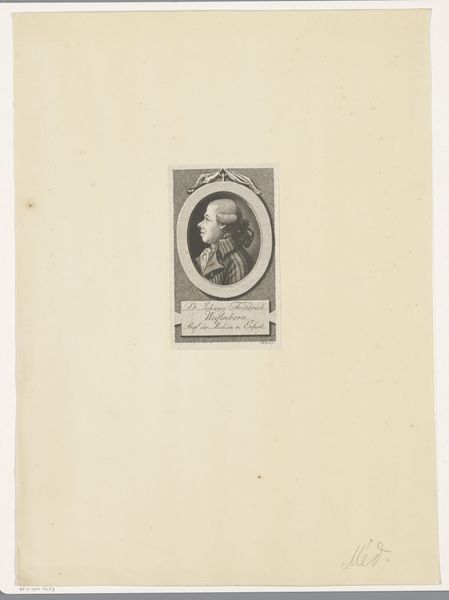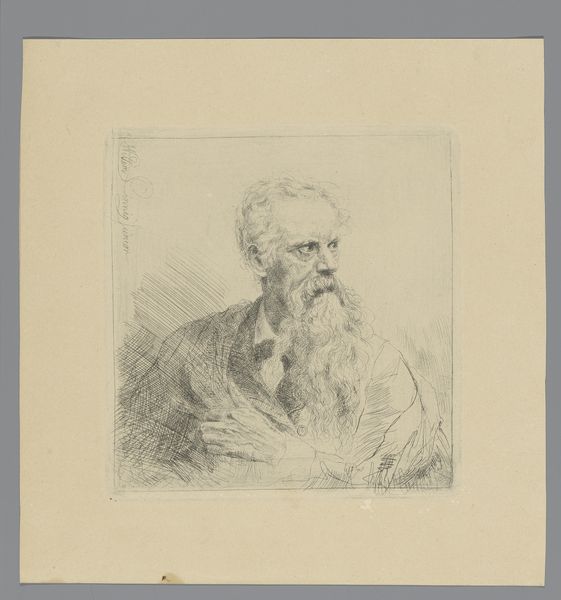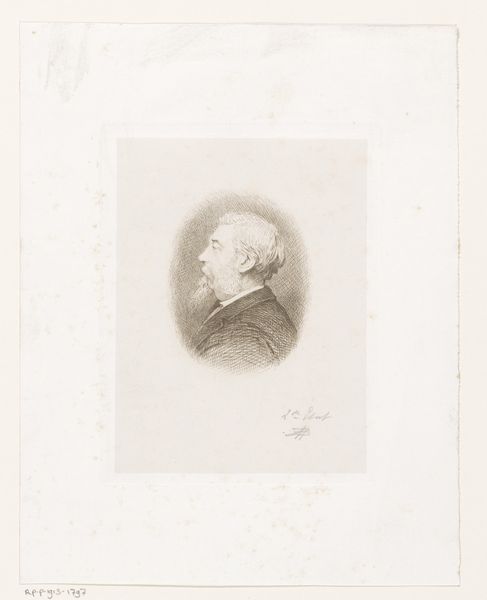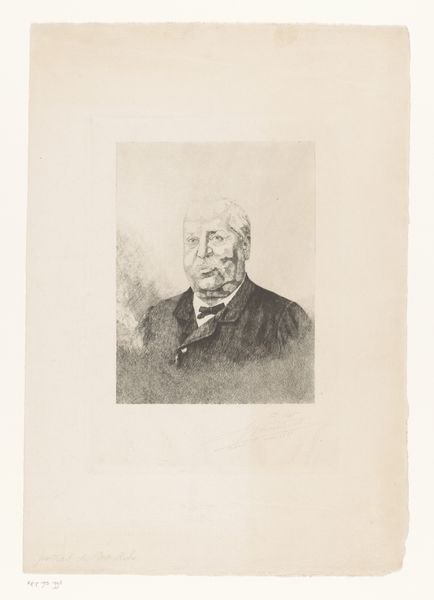
drawing, print, etching, graphite
#
portrait
#
drawing
# print
#
etching
#
graphite
#
realism
#
monochrome
Dimensions: height 197 mm, width 153 mm
Copyright: Rijks Museum: Open Domain
Curator: This etching, crafted in 1885 by Max Thedy, is titled "Bearded Man with a Pipe." It combines etching and graphite on paper, a monochromatic portrait rendered with striking realism. Editor: There's a somber, almost haunting quality to it. The tight cropping intensifies the man's gaze. It feels intimate, yet distant, perhaps speaking to the alienation of age. Curator: Precisely. The pipe, a ubiquitous symbol of the 19th century, speaks volumes about societal norms of the time, masculinity, and class, and it perhaps gives us insight into the subject's lived experiences. One must ask, however, who had the right to leisure time in those times, and, equally important, the resources to represent it? Editor: Indeed. Tobacco held ritualistic weight as a commodity in that era. Looking at this image, it evokes visualisations of wisdom and contemplation, of a figure perhaps entrenched in patriarchal structures or colonial exploitation, or simply enjoying a few personal moments of solace. Curator: Furthermore, consider how the beard acts as a signifier, especially in the context of late 19th-century German culture. It suggests intellect, perhaps even political leanings. Think about the revolutionary movements gaining traction at the time, and how visual signifiers such as beards served to consolidate and represent belonging in revolutionary ranks. Editor: That interplay is quite rich. You see the way the light etches the lines around his eyes? They speak of stories lived, resilience—or perhaps even complacency— etched into his being. Curator: And how does that resonate, if at all, when we think of what a contemporary audience projects onto the image versus what was once considered in Thedy's social environment. Are we honoring his truth, are we projecting ours? These portraits can serve as an intersection between lived, living and inherited memories, right? Editor: I concur. The print isn’t merely an aesthetic artefact—it’s an invitation to dissect and unravel the intersecting layers of history, personhood and symbol embedded within an object. Thank you, that truly expanded my viewing. Curator: Thank you for your interpretations and for your astute perspective.
Comments
No comments
Be the first to comment and join the conversation on the ultimate creative platform.
